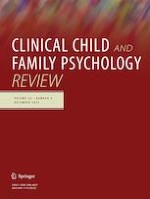06-10-2023
Why Suicide? Suicide Propinquity and Adolescent Risk for Suicidal Thoughts and Behaviors
Gepubliceerd in: Clinical Child and Family Psychology Review | Uitgave 4/2023
Log in om toegang te krijgenAbstract
Suicide represents an international public health concern, and for adolescents aged 14 to 18 in the United States, is the third leading cause of death (Centers for Disease Control and Prevention. 2021 Youth Risk Behavior Survey Data. Available at: www.cdc.gov/yrbs. Accessed on August 30, 2023.). In response to this alarming rate, as well as the relative lack of meaningful progress in the prediction and prevention of suicidal thoughts and behaviors (STB) over the past decades (see Franklin et al., 2017), recent reviews of the suicide literature have advocated for the adoption of novel frameworks and theoretical reexamination of the processes that confer risk for suicide. Currently, the majority of suicide theories emphasize distal factors associated with suicide risk, but these factors also generalize to other types of psychopathology and do not answer the fundamental question of “why suicide?” vs. other maladaptive outcomes. In an effort to address this gap and build off existing theoretical and empirical science from various disciplines, the current theoretical paper will explore the concept of suicide propinquity, the degree of closeness and identification with STB, as a potential moderator of the link between psychological distress and suicide. Specifically, this paper: (1) provides context within the existing theories of suicide, highlighting gaps that might otherwise be explained by propinquity; (2) discusses historical and scientific evidence of suicide phenomena that support the existence of propinquity; (3) explores potential processes of how propinquity may confer risk for STB in adolescence; and (4) suggests future directions for research to examine adolescent suicide from a propinquity perspective.
